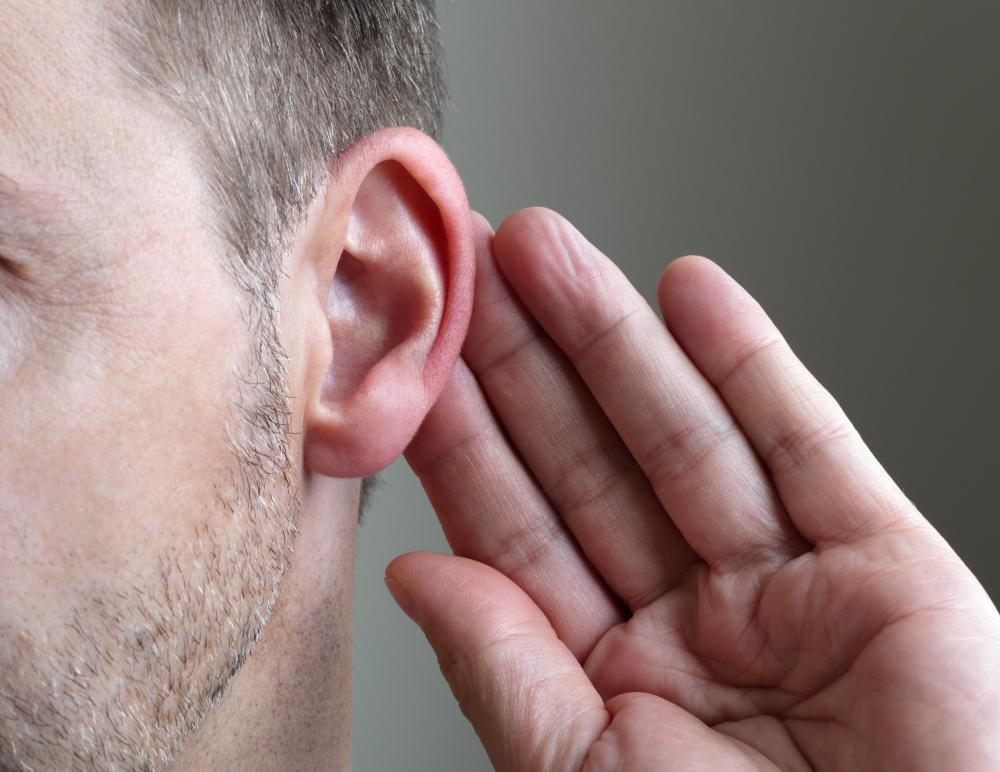At WiseGEEK, we're committed to delivering accurate, trustworthy information. Our expert-authored content is rigorously fact-checked and sourced from credible authorities. Discover how we uphold the highest standards in providing you with reliable knowledge.
What Is the Difference between a Cochlear Implant and a Hearing Aid?
A cochlear implant and a hearing aid differ in that a cochlear implant is implanted surgically within the ear. Individuals with significant hearing loss or deafness are considered candidates for a cochlear implant when a hearing aid is not an option. Generally, individuals who have sustained mild to moderate hearing loss, due to environmental factors, age or disease, benefit from the use of a hearing aid.
There are other distinctive differences between a cochlear implant and a hearing aid. Unlike a hearing aid, a cochlear implant is permanently positioned within the ear and may not be reversed. Although a cochlear implant and a hearing aid are devices designed to help restore hearing, they work by fundamentally different means. It is important to understand the differences in degrees and types of hearing loss before making the choice between a cochlear implant and a hearing aid.

Individuals with profound deafness or sensorineural hearing loss (SNHL), usually in both ears, can undergo cochlear implantation in an effort to restore their hearing. Whereas a hearing aid amplifies sound, a cochlear implant stimulates the auditory nerve. A cochlear implant does not restore one’s hearing, but offers a reasonable replication of sound that the individual is able to understand.

Sensorineural hearing loss occurs when the inner ear's hair cells sustain irreversible damage. Individuals with this form of hearing loss have trouble distinguishing sounds and understanding speech, especially when there is significant background noise. Frequently, individuals with sensorineural hearing loss experience persistent buzzing in their ears and may have impaired equilibrium that causes dizziness. Sensorineural hearing loss may be congenital, meaning it is present at birth, or may result from infection, disease or injury.

A cochlear implant is composed of two primary parts, one that is implanted below the skin behind the ear and another that is positioned outside the ear as a hearing aid would be. The inner portion contains a receiver containing electrodes that are linked directly to the cochlea and are used to stimulate the auditory nerve. The outer portion contains a microphone that picks up sound and delivers it to the electrodes within the ear.

Cochlear implantation is a two-step process. Initial surgery is performed to implant the electrodes and a subsequent visit involves fitting the individual with the external speech processor and microphone. Once both portions of the implant are positioned, the device is activated. Individuals who receive a cochlear implant are required to keep annual appointments so the implant may be adjusted as needed. Additionally, cochlear implant recipients undergo extensive speech therapy and rehabilitation.

Conductive hearing loss (CHL) is a progressive loss of hearing over time and may be treated with a hearing aid. Oftentimes, CHL is caused by fluid or wax buildup within the ear canal. Infection, which may occur with the measles and scarlet fever, and injury to the inner ear may also contribute to the subtle, progressive loss of hearing over the long term. Individuals who are regularly exposed to loud noises, such as may occur in a work setting, are also at risk for CHL.
Individuals with conductive hearing loss are considered appropriate candidates for a hearing aid, which works by amplifying sound. The degree of hearing loss will determine the amount of amplification necessary to restore hearing. Depending on the type of hearing aid used, it may sit within the ear canal, inside the outermost part of the ear or behind the ear. Similar to a cochlear implant, a hearing aid does not cure hearing loss but will allow someone to hear better. In some cases, if one's CHL is severe enough, the individual may be given the choice between a cochlear implant and a hearing aid.
AS FEATURED ON:
AS FEATURED ON:















Discuss this Article
Post your comments